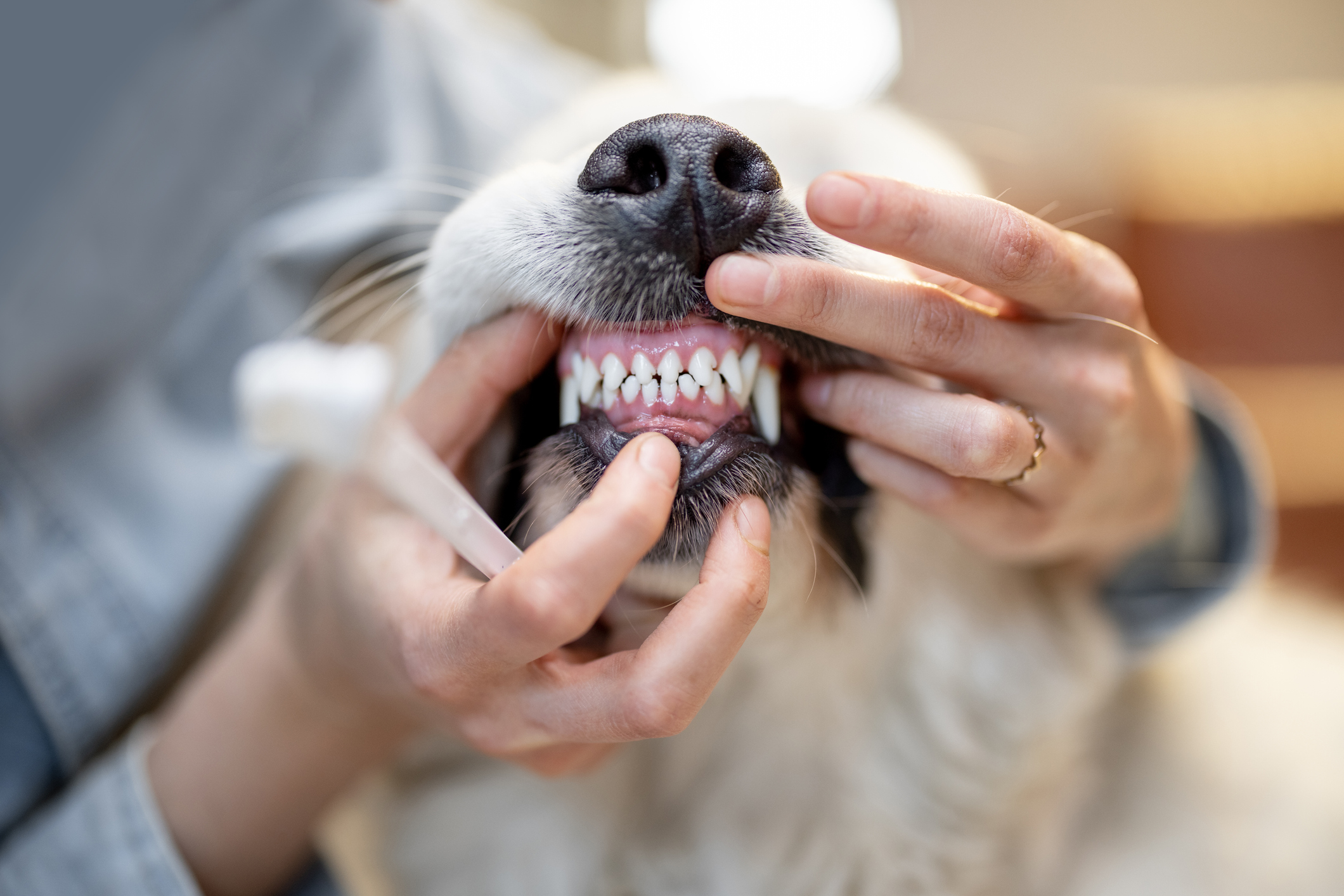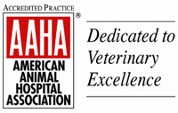Dental care plays an essential role in your pet’s overall health. That’s why we make dental health for dogs and cats a priority at Old Towne Animal Hospital. Let’s take a look at why pets need dental care and what we can do to help keep their mouths healthy.
By 3 years of age, most cats and dogs have some form of periodontal disease (also called gum or dental disease). With periodontal disease comes other potential health problems—and not just in a pet’s mouth. Besides gum recession, infection, and tooth loss, periodontal disease can cause changes in the heart, kidneys, and liver.
What Is Periodontal Disease?
Plaque forms on teeth (pet and human alike) constantly. When it’s not removed regularly (through brushing), it changes into hardened tartar within about 24 hours. Plaque continues to form on top of the tartar.
Tartar can’t be brushed away. It has to be removed during a professional dental cleaning.
If these layers of bacteria-laden tartar aren’t removed through a veterinary cleaning, the pet will end up with inflammation of the gums (gingivitis), which will progress to infection and loss of tooth support (advanced periodontal disease).
When pets don’t receive regular dental care, they may need more than just a cleaning. Dental extractions may be required to remove infected teeth and make a pet’s mouth healthy again.
What Are Signs of Dental Problems in Pets?
Dogs and cats with periodontal disease or other dental issues may have:
- Bad breath
- Brown or yellow teeth
- Red, swollen gums
- Bleeding from the mouth
- Broken or loose teeth
- Reluctance or refusal to eat
- Dropping food from the mouth
- Growling at food
- Chewing abnormally
- Excessive drooling
- Pawing at the mouth or face
- Sneezing
Bad breath in pets isn’t normal. It’s almost always a sign of oral issues.
Contact us if you notice any of these signs.
How Can You Help Keep Your Pet’s Mouth Healthy?
Bring Your Pet In for a Dental Exam
Bringing your pet in for regular veterinary dental health exams and cleanings (as recommended) is the first step to achieving better dental health for your dog or cat.
For every dental procedure, we use digital x-rays (radiographs) to evaluate what your pet’s teeth look like under the gums. We can only assess about 40% of a dog or cat’s teeth just by looking at them, so we use state-of-the-art digital x-rays to show us what might be lurking unseen, such as painful root disease, tooth resorption, or the extent of a cracked tooth. That way, we can be sure we’re properly treating your pet.
Our team also takes plenty of precautions to make sure that dental procedures stay as safe as possible for our patients:
- We perform preanesthetic bloodwork before a dental cleaning or surgery to ensure that pets are healthy enough to undergo anesthesia and to tailor anesthesia medications to individual pets as needed.
- We also actively monitor pets during and after dental procedures to make sure their vital signs stay within normal ranges, similar to protocols that are used when people undergo anesthesia.
During a dental cleaning, our specially trained veterinary technicians will remove built-up plaque and tartar, then polish your pet’s teeth, which can help slow the future buildup of tartar.
If your pet needs additional dental care, such as extractions, we will make sure you understand what needs to be done and why.
Make Home Care a Priority
You play an essential role in your pet’s dental health. Brushing your pet’s teeth is the cornerstone of dental care and one of the most important steps you can take to help keep dental disease at bay. Here’s how to get started:
- Use pet toothpaste and either a pet-specific toothbrush or an appropriately sized human toothbrush (kid-sized for cats and small dogs and a soft-bristled adult one for medium and large dogs).
- Ideally, begin a brushing routine when your pet is young. Older pets can also learn to enjoy (or at least tolerate) brushing, especially if you ease into it.
- Keep sessions short, especially at first.
- Start with just touching your pet’s teeth (or even a single tooth or two) with a toothbrush. Use the hand that isn’t holding the toothbrush to gently lift your pet’s lip.
- Gradually begin brushing the teeth on one side of your pet’s mouth.
- Never force it. If your pet seems uncomfortable, stop and try again the next day.
- Reward your pet with tiny treats, in addition to tasty pet-safe toothpaste, to help encourage your pet to let you keep brushing.
- Build up to brushing all of your pet’s teeth. Aim for 1 to 2 minutes once a day.
- Ask us for additional toothbrushing tips.
Never use human toothpaste for pets! It contains ingredients that can make your pet sick.
Consider Other Dental Options
Although daily brushing is ideal, we understand that it may not always be practical. Fortunately, a number of dental products can help control plaque and tartar buildup in your pet:
- Dental diets and chews
- Dental toys
- Oral rinses and sprays
- Drinking water additives
- Dental sealants (we can refer you to a veterinary dental specialist to learn more about this option)
Ask us which products we recommend for your pet. You can also look for products with the Veterinary Oral Health Council (VOHC) Seal of Acceptance.
By being proactive about dental care, you can help protect your pet’s overall health.
Have You Scheduled Your Pet’s Dental Exam?
We recommend that pets visit us at least once a year for a dental evaluation, as part of their regular wellness exam. We’ll examine your pet’s teeth and gums and let you know what we recommend to maintain or improve your pet’s oral health.
If your pet is showing signs of dental trouble, though, don’t wait for your pet’s annual exam. Contact us today!



